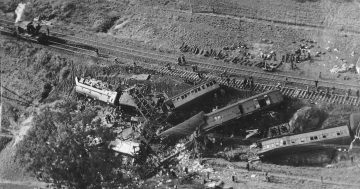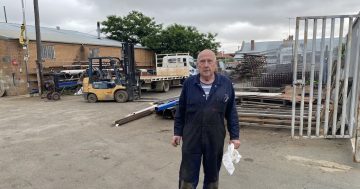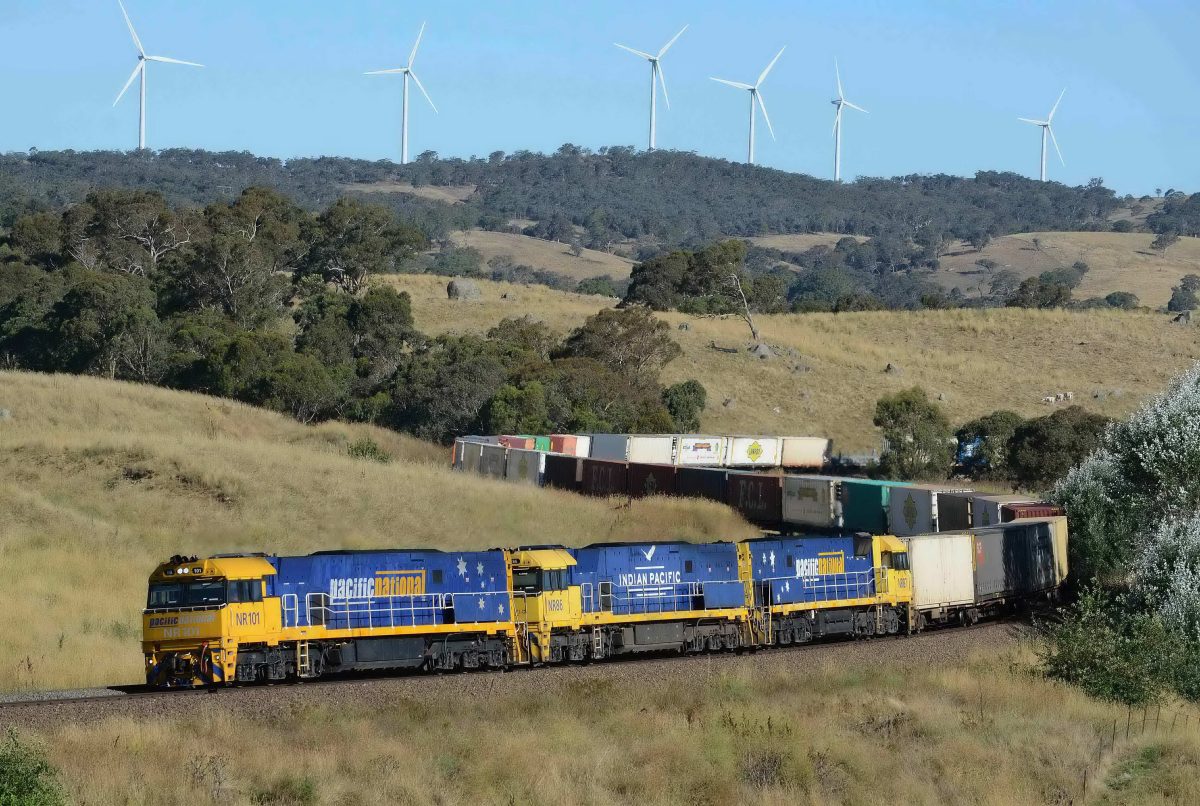
A Melbourne-bound Pacific National-operated Superfreighter winding its way down a series of 15 chain radius curves in the Cullerin Range near Gunning. Sharp curves in the line to reduce the grades in the early 1900s have not been replaced and slow today’s more powerful locomotives. Photo: Leon Oberg.
Early next month, Engineers Australia will mark one of the nation’s historic rail achievements: the 150th anniversary of the extension of the Main South Railway Line from Goulburn to Gunning.
Frank Johnson, a civil engineer who began his 50-year rail career looking after the tracks from Goulburn to Yass Junction in the late 1960s, has organised the anniversary commemoration.
Frank will be one of three speakers covering the political and engineering challenges of the extension from Goulburn, their relevance to modern infrastructure projects and the future of rail and high-speed rail.
The Main South Line was still carrying considerable passenger and goods traffic in the 1960s when Frank, then only 21 years old, closed the line near Goulburn.
Called out in the middle of the night, he had inspected a ballast shoulder along the line that had been washed away and instructed rail staff to contact a train controller to close the line.
“I didn’t have to ask the boss or anybody else,” Frank said, recounting 1968 when he was fresh out of university and swiftly promoted to the district engineer’s role. At the time, Goulburn employed more than 1000 railwaymen.
Their work culture was influenced by a former army major general and senior rail executive in the 1950s, Albert Fewtrell, who believed in throwing young officers into the firing line rather than having them sit idle in an office.
And so the ink was hardly dry on young Frank’s civil engineering degree when he found himself in charge of 50 men who maintained about 45 miles (72 kilometres) of double track on the Main South Line from just south of Goulburn to Yass Junction, plus 35 miles (56 km) on the Bombala branch line.
Even though it was on the cusp of mechanisation, the railway was still reliant on tough physical labour from fettling gangs for jobs such as resleepering the line. Men armed with sleeper tongs heaved the old sleepers out, hauled the new ones into place and hammered in steel dog spikes to secure them.
An unofficial quota was 10 sleepers per man per day, Frank recounted in an article for Australian Railway History. A team of 40 men could replace 800 sleepers over a weekend.
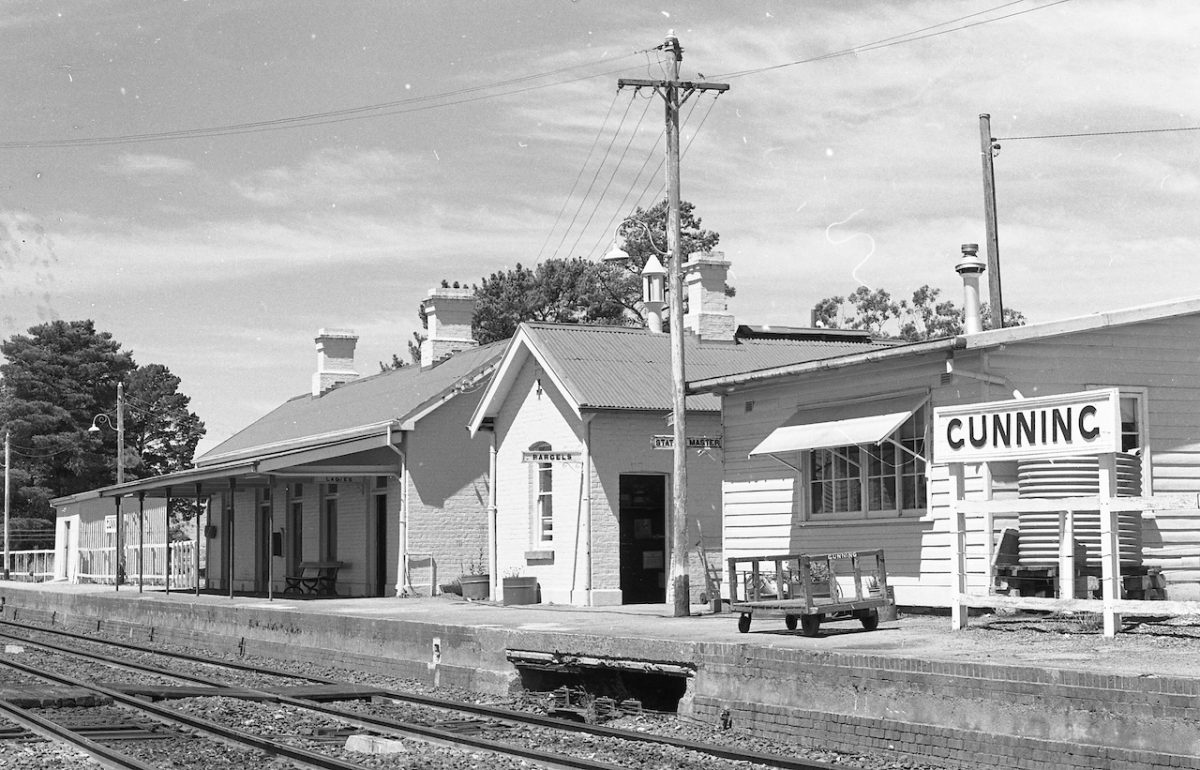
The Main South Line reached Gunning in 1875, improving transport and commerce. By 1895, in one year the station had shipped out 31,024 sheep, 884 pigs, 341 cattle, 65 calves and nine horses. Also, 3106 bales of wool and 1600 tons of goods. The station had issued 2335 passenger tickets. Photo: Australian Railway Historical Society.
Frank described the head gangers and their staff in the Goulburn district as salt of the earth, hard-working, competent and experienced.
The gangs were based at South Goulburn (Clarrie Townsend), Breadalbane (Alf Bush), Cullerin (Arthur Cockburn), Fish River (Ossie Chalmers) and Gunning North (Les Powell). Beyond those, Frank had gangs at Gunning South (Ken Bush), Oolong (Ham Bush) and Jerrawa (Jimmy Ryan).
Maintaining the busy tracks and rail corridor was dangerous. In May 1969, Breadalbane ganger Alf Bush, who had been keeping an eye out for trains while on a job, either didn’t see the passenger diesel one coming in his direction or was mesmerised by it.
It struck and killed the father-of-six instantly while he was working with two others boring sleepers in preparation for a major resleepering job. One of the other men had started his new career on the railway that morning.
“Imagine your first day at work and your boss is run over by a train?” Frank said.
He was grateful Arthur Cockburn, who was in charge of the Cullerin gang and in Frank’s opinion the best ganger in his district, stepped in knowing how the other railwaymen would have been feeling. He went to the site and cleaned it up, burning the sleepers that the ganger had hit when struck by the train, and kept the job going.
Frank himself narrowly avoided being hit by a train twice while inspecting the railway lines on a quadricycle, a four-wheel motorised rail vehicle.
When the Intercapital Daylight was suddenly bearing down on him north of Breadalbane in November 1968, he managed to jump clear. Then in July 1969, he just managed to escape certain death when an express goods train smashed his quadricycle to pieces.
No counselling was offered in those days.
“I went to see my girlfriend and got my counselling from her, which was very nice,” he said.
He later married the Goulburn woman, Nadia Koschenow.
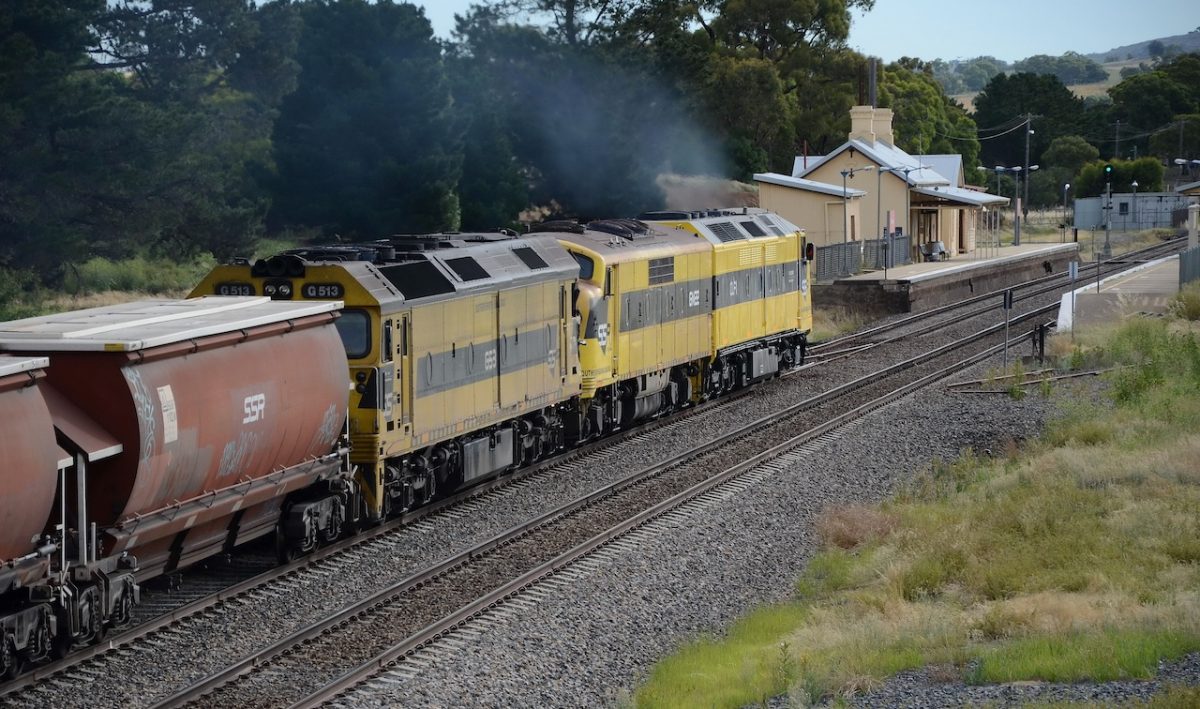
A southbound train powering through Gunning station recently. Photo: Leon Oberg.
His two years as the district engineer had a profound influence on the rest of his working life.
Joining Frank at Engineers Australia for the anniversary address on 5 November will be senior rail engineer Wilson Dai from Mott MacDonald and High Speed Rail Authority chief executive Tim Parker. To book or for more information about the event, click here.







